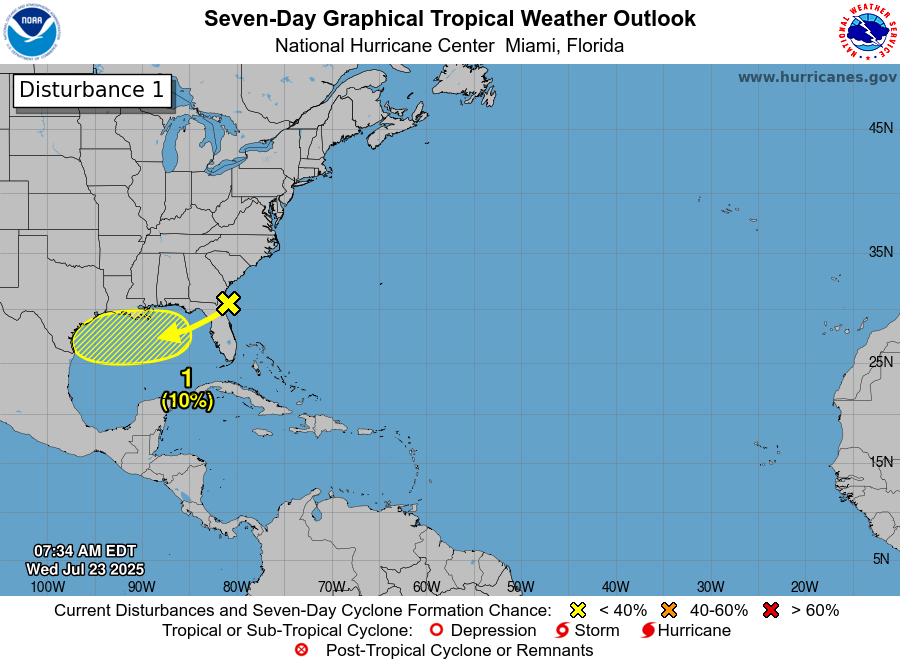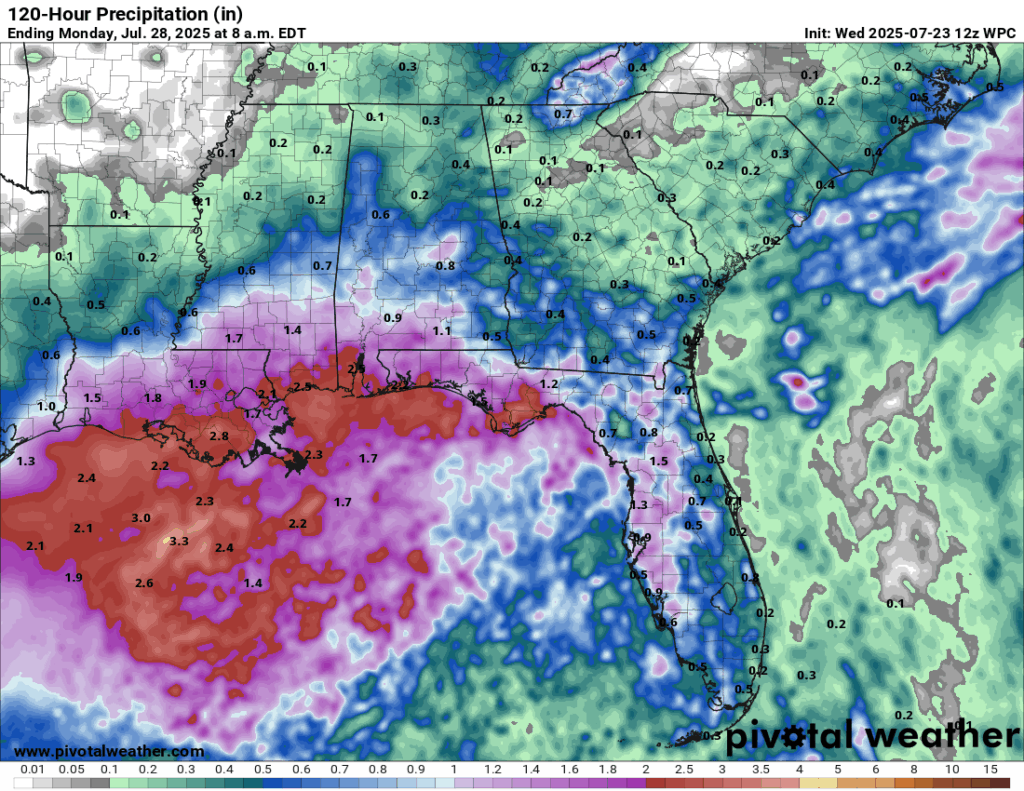In brief: The odds of a tropical system in the Gulf remain low, but we explain the evolution of things below. Also, we look at the ridiculous duration of flooding risks we’ve seen since June. We also talk about the ongoing and continuing heat wave and why despite not setting a bunch of records, it’s still a big deal.
Gulf tropical system
Late yesterday, the National Hurricane Center tagged the disturbance heading into the Gulf on their outlook map, giving it about a 10% chance of development. That still seems fair today.
Currently, the disturbance is very, very sloppy and spread out a good bit between the Gulf and off the east coast of Florida.
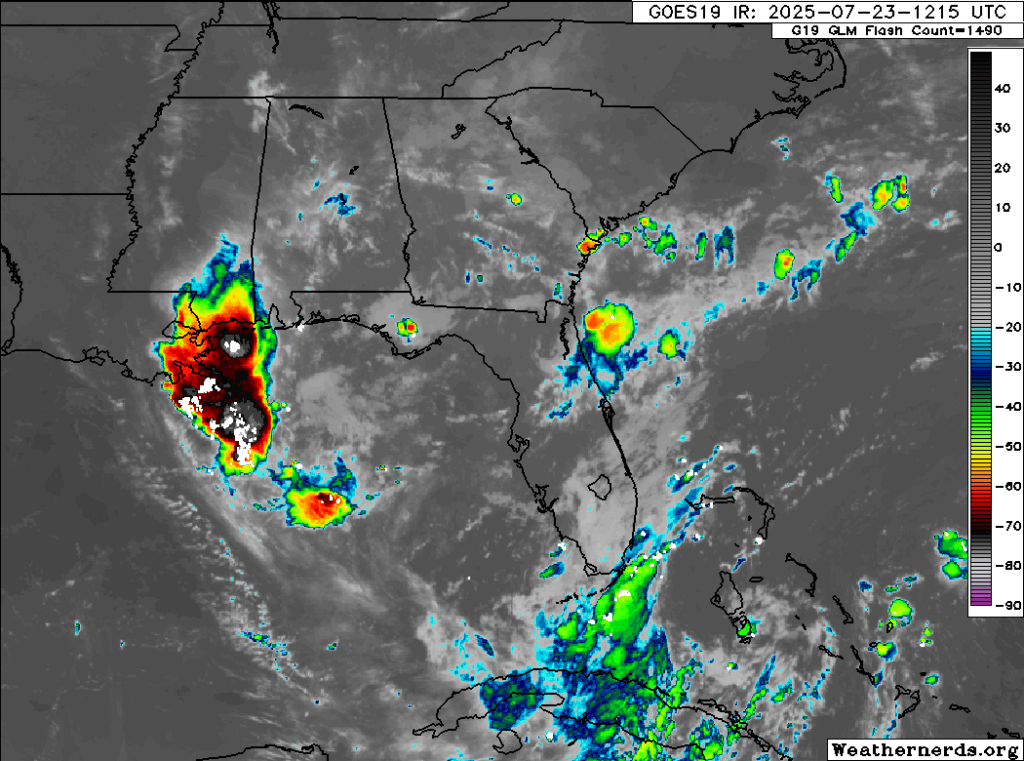
Wind shear in the Gulf is not exactly hospitable right now for development, as this disturbance will probably at least initially encounter a good bit of that. Wind shear tends to limit tropical development because storms prefer a less hostile environment in which to thrive.
But as this chugs west today and tomorrow, it may encounter a few periods of time where it will be less hostile, and that could lead to at least an attempt to organize. The only model suite right now that seems to be supportive of organization (and even in that case, it’s not particularly much) is the European ensemble. It seems to lack support from most other modeling, including the typically more aggressive ICON and Canadian models. Even in the Euro ensemble’s case, despite the ensemble mean showing 60 to 70 percent probabilities of a depression, only about one-third of members show any real organization.
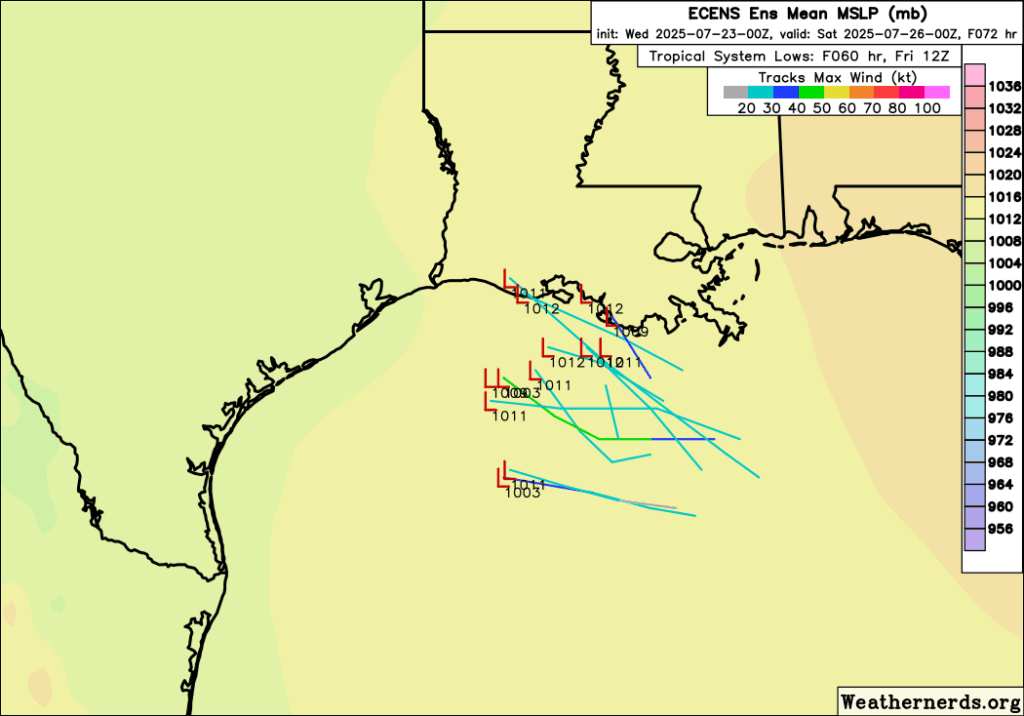
Yes, it’s the Gulf, and yes, you should probably check back in tomorrow to see if anything has changed. However, it seems unlikely that this will develop beyond tropical depression status if it gets there at all.
What it will do is drop some locally heavy rain along the Gulf Coast.
Flooding concerns aren’t zero, but as we’ve noted this week there’s some breathing room here, and with a generally progressive moving system, rainfall amounts in any single location will probably be manageable.
So bottom line on the Gulf? Yes, something may try to briefly develop before moving into Texas on Friday. However, the ceiling is low and model support is extremely limited. The main impact from this system regardless will be locally heavy rain, and that should hopefully be manageable everywhere through Saturday.
It’s rain o’clock somewhere
The daily Weather Prediction Center excessive rainfall outlooks, or what we call the EROs are required consumption if you’re a meteorologist. Most of us look at them daily and read the discussions fairly regularly. The WPC does a phenomenal job at identifying and homing in on areas of excessive rainfall and flooding risk.

The risks are on a 4-level scale, from marginal to slight to moderate to high. Not that serious flooding can’t occur on a marginal risk day; it can, but typically, once you see the slight risks (2/4) or higher, you sit up a little more and pay a little closer attention. The last day that saw no slight risks of flooding was over a month ago, June 22nd. It has been non-stop somewhere in the country since then. One day it’s Texas, the next it’s the monsoon, the next it’s the Carolinas, after that it’s Iowa, then it’s New Jersey and New York City, etc., etc. Almost all corners of the country have been blanketed by a slight risk of flash flooding at some point in the last month. It has been exhausting for forecasters in many spots.
Today’s risk is highlighted in the Upper Midwest, once again a slight (2/4) risk. Some of those areas saw 1 to 3 inches of rain yesterday, and today’s forecast will probably lead to another 1 to 3 inches of rain.
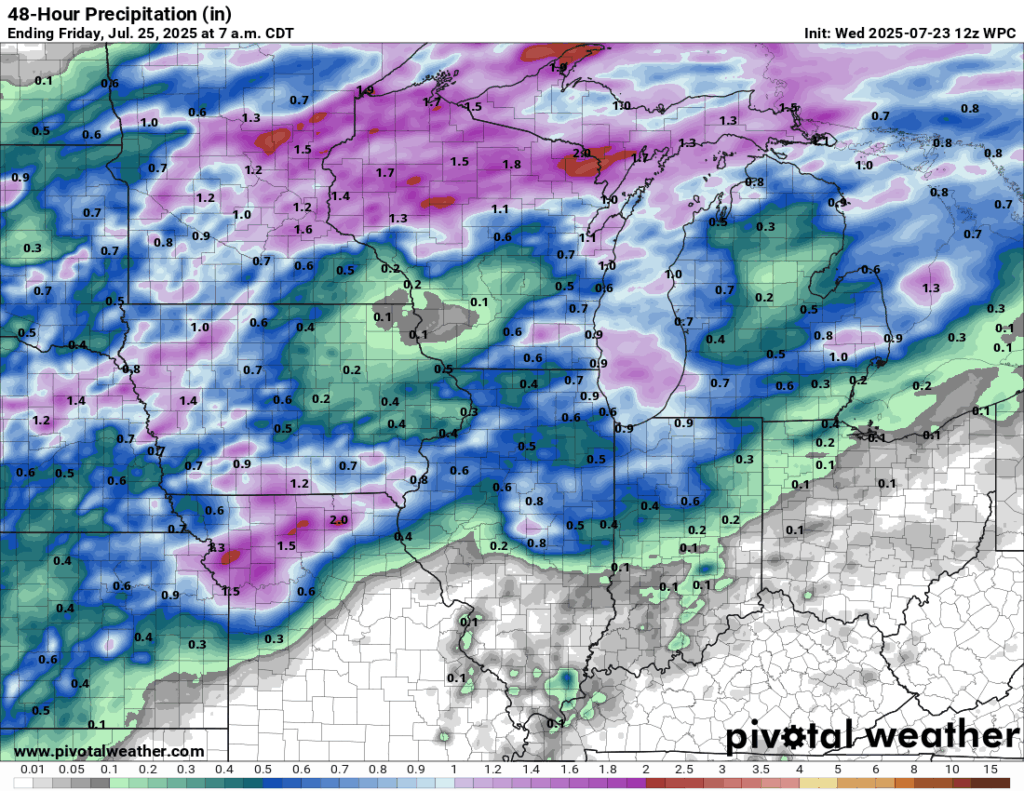
Flash flooding is a possibility, as are locally higher amounts as some of these storms pass repetitively over the same areas.
Heat wave: All bark, no bite? It’s complicated
The interesting thing about this heat wave that’s ongoing across the country and likely to expand even farther afield next week is that very few record temperatures are being attained. Usually when you see a setup like this, you expect a fair number of records to fall. In reality, we’re getting the upper-level signal in the atmosphere of a pretty healthy heat wave. For example, if you look at the probability of 500 mb heights hitting the 99.5th percentile (or a high-end event) next Monday, you see a broad section of the Deep South, Mid-South, and Ohio Valley in play.
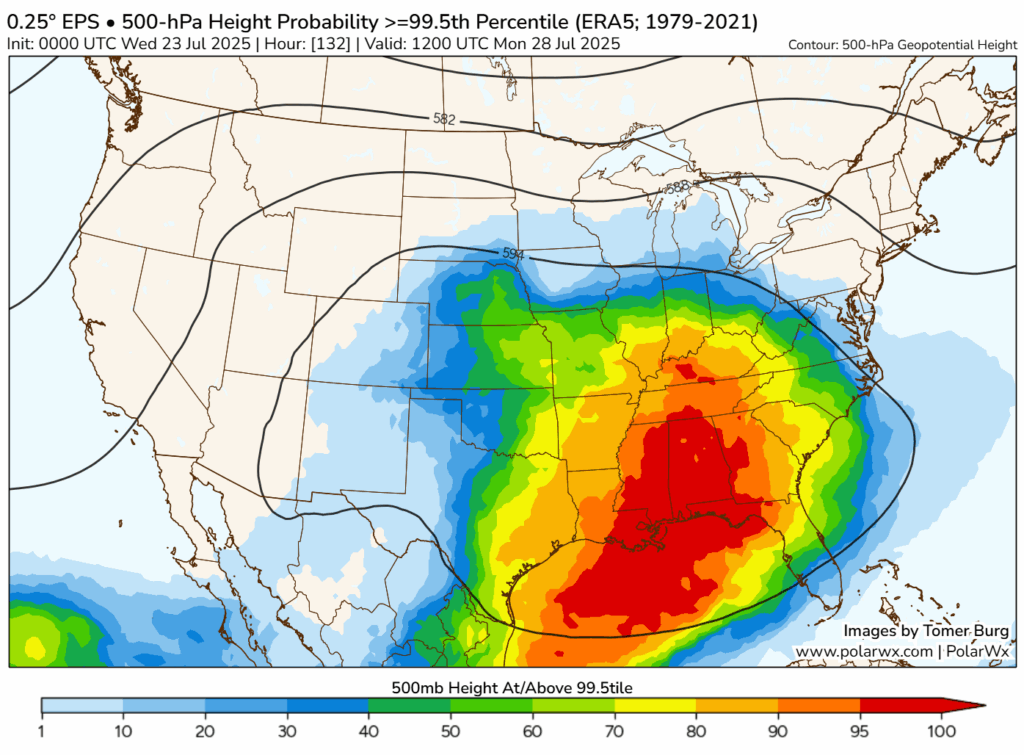
The 500 mb height is a good metric to use to analyze whether we see ridging or troughing, hotter than normal or cooler than normal. It tells us what the pattern is about 20,000 feet up, and for next week it says it’s gonna be hot!
But then if you look at temperatures in the lower levels of the atmosphere, up around 5,000 feet, you can see that the potential for a 99.5th percentile (or a high-end event) is quite low.
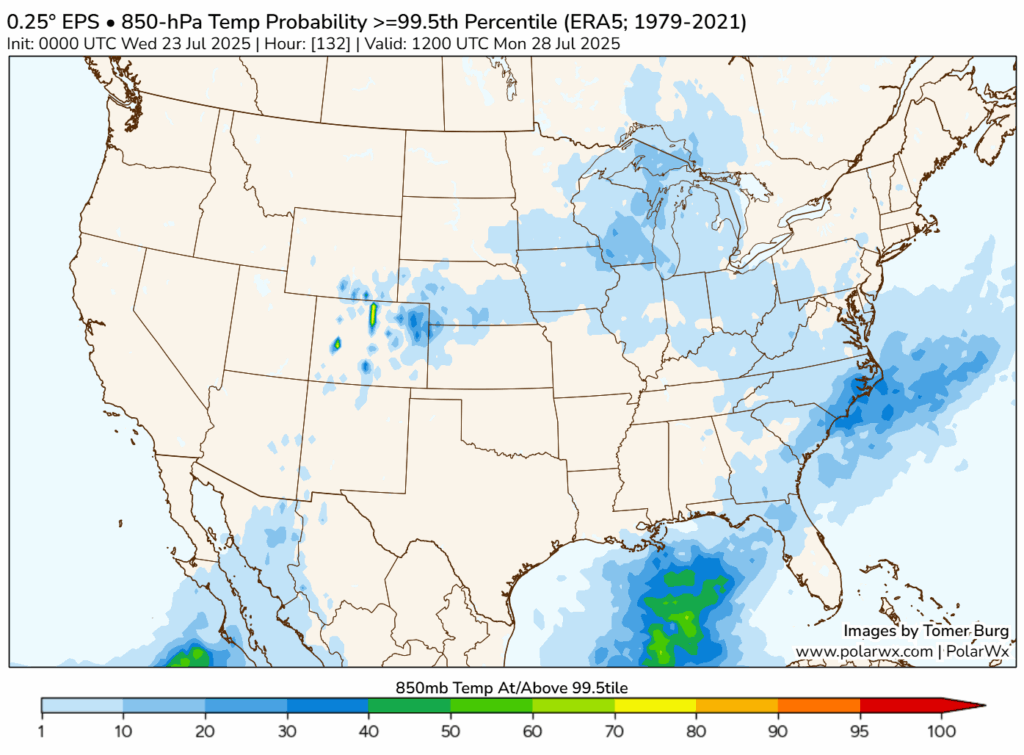
So in theory, we have a couple conflicting pieces of information here. The upper pattern strongly supports heat, but the actual air mass we’re pulling from isn’t ridiculously hot for this time of year. The outcome? A lot of heat over a broad area, but very little record heat. I would also speculate perhaps that since we’re sitting right near the climatological peak of summer right now, it just is genuinely more difficult to see record highs. It’s hot during the hottest time of year; that’s not terribly abnormal.
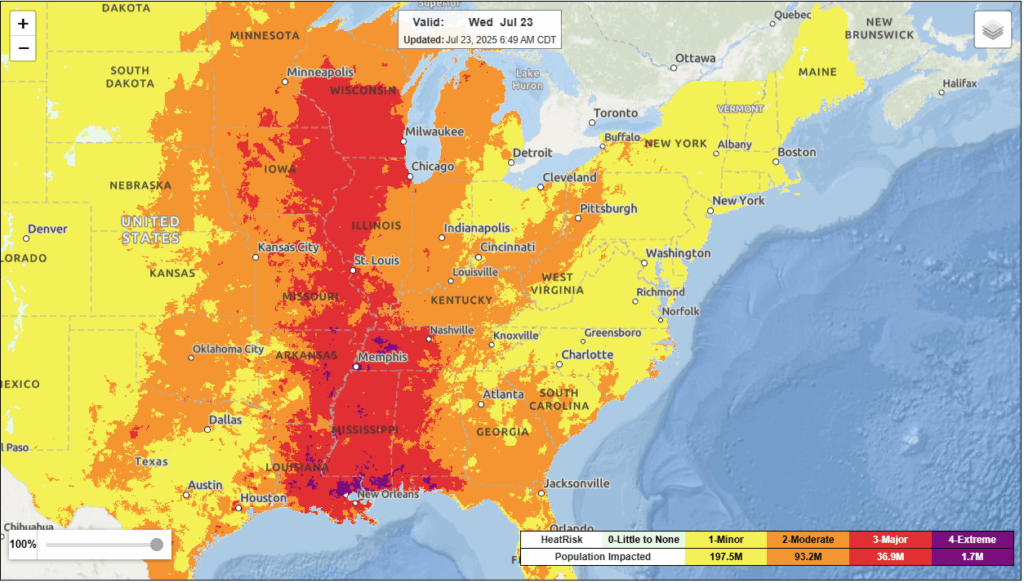
But the duration is what’s at play here. Multiple days of this type of mid-grade heat in a row plus humidity can take a toll on the human body, particularly in vulnerable communities, and that’s why it’s an important event to discuss and cover.
